At the New York Fed: Fourth Annual Conference on the Evolving Structure of the U.S. Treasury Market
The New York Fed recently hosted the fourth annual Conference on the Evolving Structure of the U.S. Treasury Market. The one-day event was co-sponsored with the U.S. Department of the Treasury, the Federal Reserve Board, the U.S. Securities and Exchange Commission (SEC), and the U.S. Commodity Futures Trading Commission (CFTC). This year’s agenda, which included a series of keynote addresses and expert panels, focused on four key topics: 1) analytical approaches to debt issuance, 2) clearing and settlement, 3) developments in cash and repo markets, and 4) analysis of transactions data. Previous conferences were held in November 2017, October 2016, and October 2015.
Highlights from the Fourth Bi‑annual Global Research Forum on International Macroeconomics and Finance

Achieving and maintaining global financial stability has been at the forefront of policy discussions in the decade after the eruption of the global financial crisis. With the purpose of exploring key issues in international finance and macroeconomics from the perspective of what has changed ten years after the crisis, the fourth bi-annual Global Research Forum on International Macroeconomics and Finance, organized by the European Central Bank (ECB), the Federal Reserve Board, and the Federal Reserve Bank of New York, was held at the ECB in Frankfurt am Main on November 29-30, 2018. Participants included a diverse group from academia, international policy institutions, national central banks, and financial markets. Among the topics of discussion: the international roles of the U.S. dollar, the evolution of global financial markets, and the safety of the global financial system.
Price Impact of Trades and Limit Orders in the U.S. Treasury Securities Market

It’s long been known that asset prices respond not only to public information, such as macroeconomic announcements, but also to private information revealed through trading. More recently, with the growth of high-frequency trading, academics have argued that limit orders—orders to buy or sell a security at a specific price or better—also contain information. In this post, we examine the information content of trades and limit orders in the U.S. Treasury securities market, following this paper, recently published in the Journal of Financial Markets and earlier as a New York Fed staff report.
Breaking Down TRACE Volumes Further

Following an earlier joint FEDS Note and Liberty Street Economics blog post that examined aggregate trading volume in the Treasury cash market across venues, this post looks at volume across security type, seasoned-ness (time since issuance), and maturity. The analysis, which again relies on transactions recorded in the Financial Industry Regulatory Authority’s (FINRA) Trade Reporting and Compliance Engine (TRACE), sheds light on perceptions that some Treasury securities—in particular those that are off-the-run—may not trade very actively. We confirm that most trading volume is made up of on-the-run securities, especially in venues where the market has become more automated. However, we also find that daily average volume in off-the-run securities is still a meaningful $157 billion (27 percent of overall volume), and accounts for a large share (41 percent) of trading in the dealer-to-client venue of the market.
The Pre‑FOMC Announcement Drift: More Recent Evidence
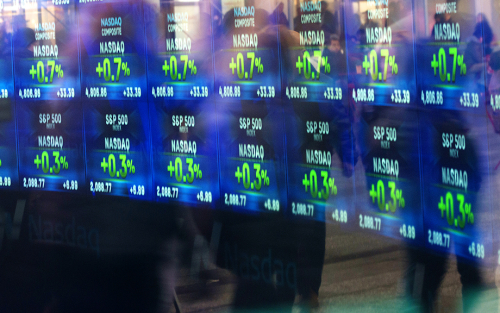
We had previously documented large excess returns on equities ahead of scheduled announcements of the Federal Open Market Committee (FOMC)—the Federal Reserve’s monetary policy-making body—between 1994 and 2011. This post updates our original analysis with more recent data. We find evidence of continued large excess returns during FOMC meetings, but only for those featuring a press conference by the Chair of the FOMC
U.S. Treasury Market Action on Election Night 2016
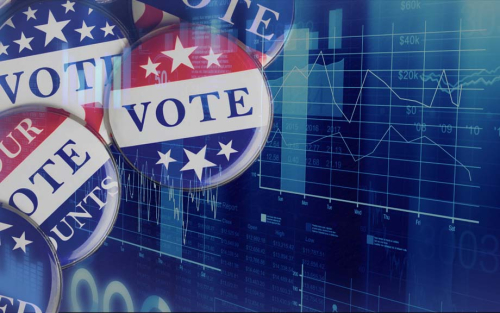
As the midterm elections approach, it’s worth revisiting the striking financial market response to the last federal elections, in 2016. U.S. equity market futures and Treasury yields first plunged on election night 2016, as the presidential election results turned out closer than expected, but quickly rebounded after President Trump’s victory became clear, ultimately ending the day higher. In this post, I take a close look at the unusual U.S. Treasury market behavior that night, focusing on the market conditions and trading flows amid which the sharp yield changes took place.
Bank‑Intermediated Arbitrage
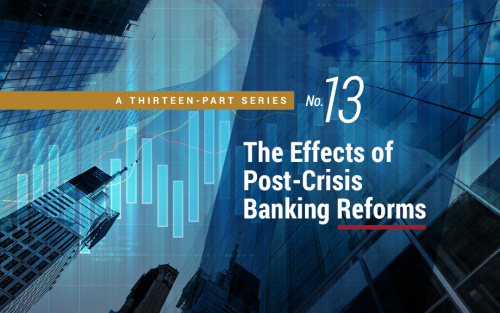
Since the 2007-09 financial crisis, the prices of closely related assets have shown persistent deviations—so-called basis spreads. Because such disparities create apparent profit opportunities, the question arises of why they are not arbitraged away. In a recent Staff Report, we argue that post-crisis changes to regulation and market structure have increased the costs to banks of participating in spread-narrowing trades, creating limits to a¬rbitrage. In addition, although one might expect hedge funds to act as arbitrageurs, we find evidence that post-crisis regulation affects not only the targeted banks but also spills over to less regulated firms that rely on bank intermediation for their arbitrage strategies.
Credit Market Choice

Credit default swaps (CDS) are frequently credited with being the cause of AIG’s collapse during the financial crisis. A Reuters article from September 2008, for example, notes “[w]hen you hear that the collapse of AIG […] might lead to a systemic collapse of the global financial system, the feared culprit is, largely, that once-obscure […] instrument known as a credit default swap.” Yet, despite the prominent role that CDS played during the financial crisis, little is known about how individual financial institutions utilize CDS contracts on individual companies. In a recent New York Fed staff report, we assess the choice banks face when trading the idiosyncratic credit risk of a firm, and argue that banks’ participation decisions have been affected in the post-regulation period, either by direct changes in market structure or by changes in the relative cost of pursuing different strategies.
Liquidity Effects of Post‑Crisis Regulatory Reform
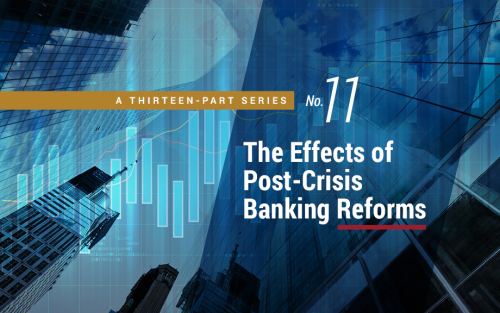
The post-crisis regulatory reform efforts to improve capital and liquidity positions of regulated institutions provide incentives for banks to change not only the structure of their own balance sheets but also how they interact with their customers and other market participants more generally. A 2015 PwC study on global financial market liquidity, for example, noted that “[a]s banks respond to the new regulatory environment, they have sought to make more efficient use of capital and liquidity resources, by reducing the markets they serve and streamlining their operations.” In this blog post, we provide an overview of three recent New York Fed staff reports that study the impact that post-crisis regulation has had on the willingness and ability of regulated firms to participate in U.S. over-the-counter (OTC) markets.
Changing Risk‑Return Profiles
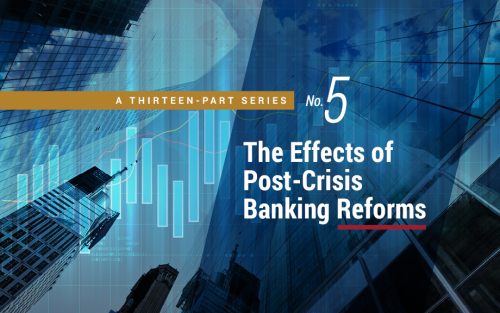
Are stock returns predictable? This question is a perennially popular subject of debate. In this post, we highlight some results from our recent working paper, where we investigate the matter. Rather than focusing on a single object like the forecasted mean or median, we look at the entire distribution of stock returns and find that the realized volatility of stock returns, especially financial sector stock returns, has strong predictive content for the future distribution of stock returns. This is a robust feature of the data since all of our results are obtained with real-time analyses using stock return data since the 1920s. Motivated by this result, we then evaluate whether the banking system appears healthier today, and if recent regulatory reforms have helped.










 RSS Feed
RSS Feed Follow Liberty Street Economics
Follow Liberty Street Economics